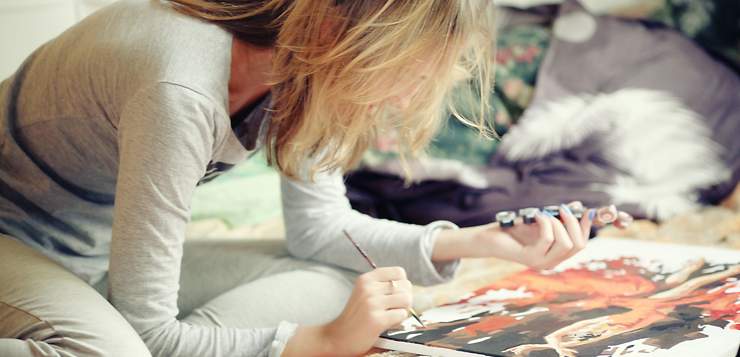“What I discovered was that the practice of mindfulness meditation evoked the same responses from me that drawing did.”
Like many artists before her, Wendy Ann Greenhalgh finds the process of producing creative work to be a deeply mindful process. Health and well-being journalist Kate Bermingham spoke to Wendy about how artists and mindfulness practitioners can benefit from blending these practices.
Kate: In your book, Mindfulness and the Art of Drawing, you argue that everyone can draw. Is that really true? And if yes, why do you think so few people do it?
Wendy Ann: I know it’s true. All the time people come into my classes saying, “I can’t draw.” A few hours later they emerge with a big sheaf of drawings under their arm. It’s very satisfying to see so many people disproving this notion that they can’t draw on such a regular basis! We draw instinctively as children. As soon as we have motor skills we pick up a stick or crayon and start making marks, marks that feel good, that are pleasing to the eye and the body that creates them. As we get a little older these drawings start to describe the world around us. One of the first “things” anyone draws is a person, for example. So in that sense drawing is innate.
Why don’t we draw? Well I believe the real obstacle is that drawing gets bunched together with a lot of thinking about drawing—like the idea that we have to draw well for example. But what is well, and who decides what it is? Most of us aren’t Usain Bolt, for example, but this doesn’t mean that we can’t run or that we can’t enjoy running.
Kate: I love the passage on “calmly abiding” with the subject that you are drawing, whether that be a landscape, a person, or even something simple like a solitary leaf or rose. Do your students find it easier to access that sense of calm and connection using art, as opposed to a traditional mindfulness practice?
Wendy Ann: I think they do, yes. In order to find ourselves in that state of calm, we need to quiet our busy minds and that’s something a lot of us find very difficult. (I speak for myself here too.) In order to do this we need to find a focus.
In traditional mindfulness practice this is usually done by focusing on the breath or sensations in the body. In “creative mindfulness” it’s done by engaging in a specific creative activity such as drawing or creative writing. I teach all creative activities in an embodied way: getting people to focus on how it feels to hold a pen, to draw or write, and encouraging them to keep checking in with their breath.
With such a strong focus on body, breath, and the specific activities of creating—people generally find it much easier to become absorbed into what they’re doing and then rest in that state of “calm abiding,” remaining there for longer and with less effort than they would just sitting on a chair meditating.
Kate: Do you find that mindful drawing brings about a greater connection with the subject than photography?
Wendy Ann: I think photography can still bring a great sense of connection—I use a simple four-step process to support this, and it helps people become less snap-happy and more mindful. But to be honest, mindful drawing probably beats everything for developing mindful seeing, mindful attention, and mindful presence.
It’s partly to do with time. It takes time to make a drawing, we make the image, rather than letting the camera do it, consequently we have to stay with something for longer than we do if we’re just taking a photo, and it requires an even deeper attention, a much closer mindful seeing of what’s before us. And all that time we’re with something, building a relationship with it, connecting with it, we’re also allowing it to connect with us, affect us in some way too.






